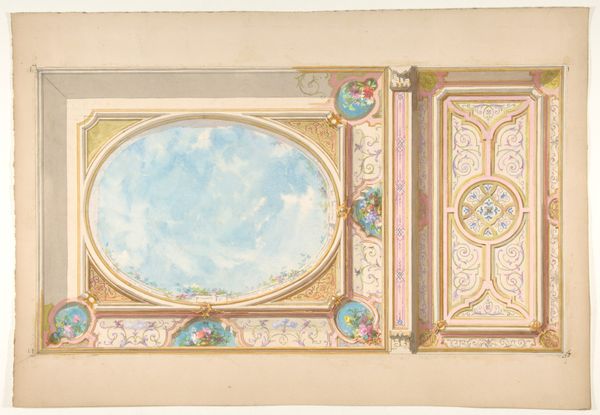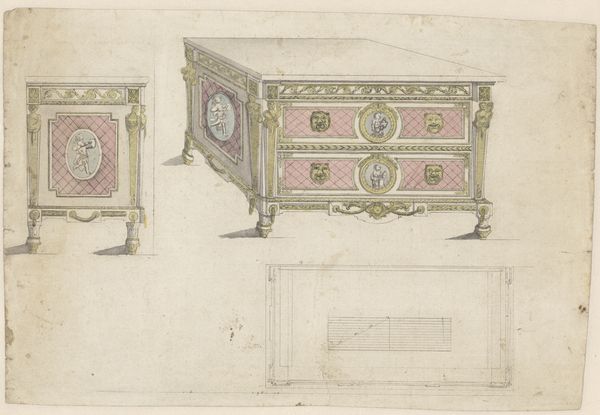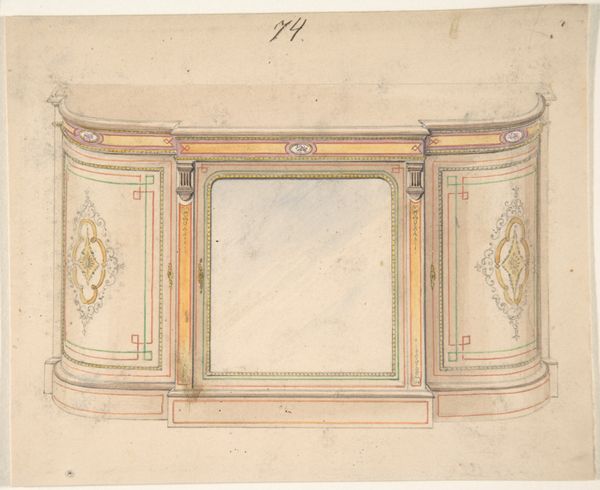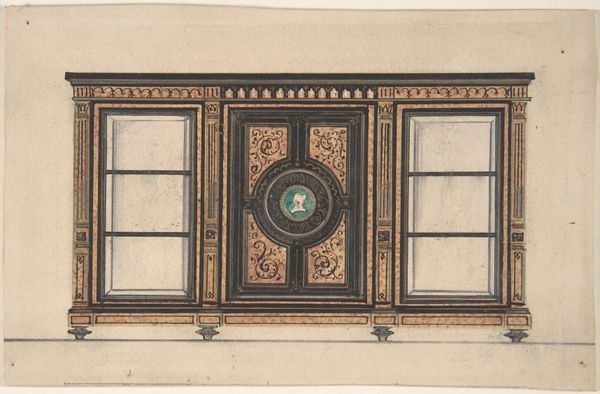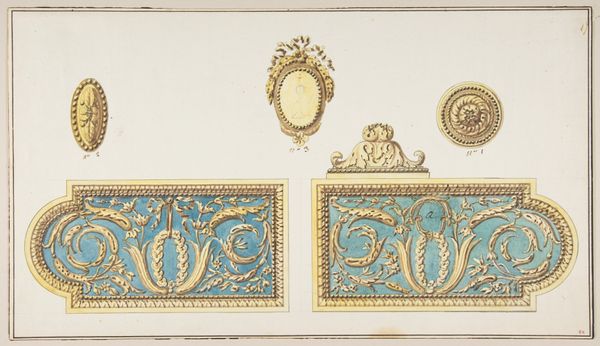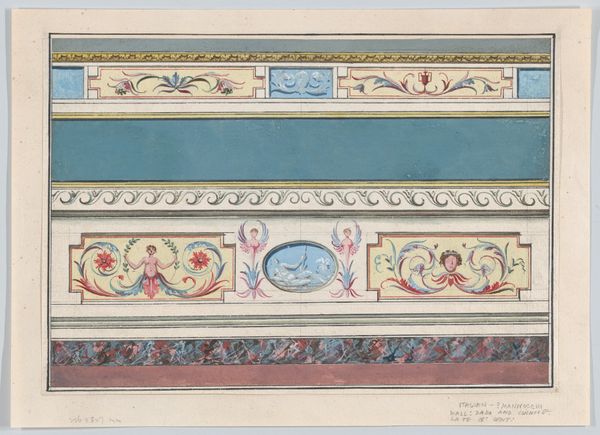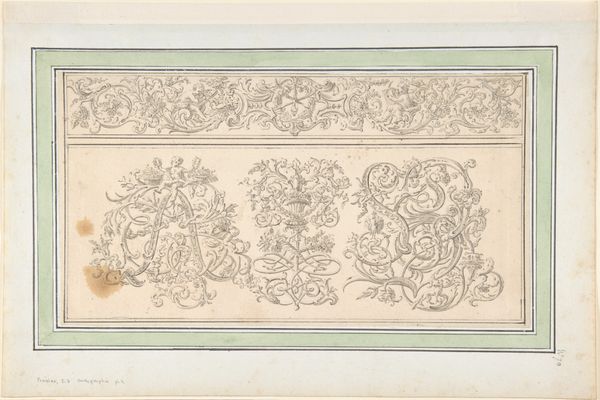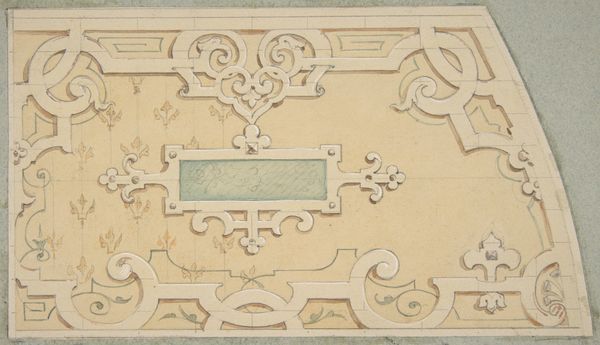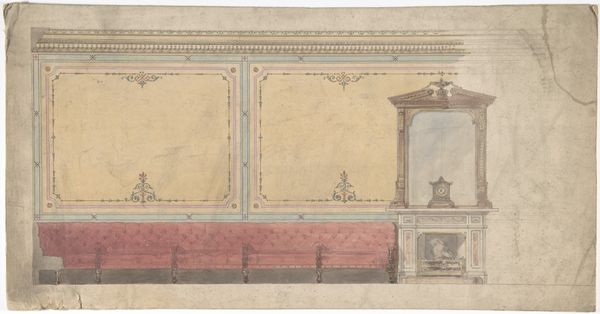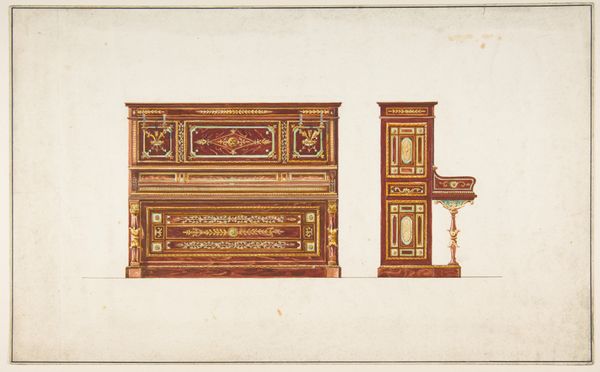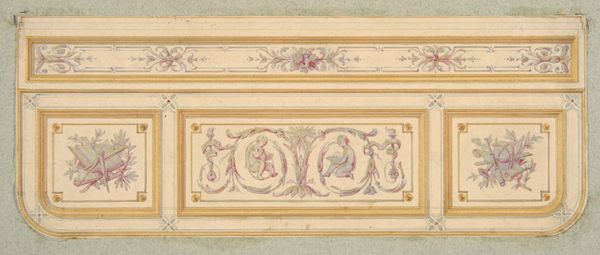
drawing, print, watercolor
#
drawing
#
neoclacissism
# print
#
classical-realism
#
watercolor
#
geometric
#
watercolour illustration
#
decorative-art
#
watercolor
Dimensions: sheet: 16 7/8 x 10 9/16 in. (42.8 x 26.9 cm)
Copyright: Public Domain
Curator: Here we have an intriguing 19th-century design drawing for a piano. Its author is currently listed as anonymous, and it's part of the collection at the Metropolitan Museum of Art. It appears to be rendered primarily in watercolor. Editor: It strikes me as incredibly delicate. The colors are so muted, almost faded, giving it a ghostly presence. There is such formality, balanced by airy decorative floral and geometric touches. Curator: Absolutely. You're picking up on the Neoclassical style quite strongly, particularly how it hearkens back to idealized forms and restrained ornamentation. Consider those floral garlands and geometric motifs, though rendered here with a light, almost playful hand. They contrast beautifully with the structure. Editor: And it begs the question, what kind of labor was involved to produce pianos that reflected this ideal? How does the intended luxury of the instrument reflect the piano maker's actual experience? Were these pianos even realized? The very specific choice of delicate material implies intended environments and tastes. Curator: Well, that points to a fascinating tension of Neoclassicism: the intent to revive seemingly pure, unadorned forms from antiquity but layered with an undeniably ornamental surface. These repeated decorative patterns suggest not only visual appeal but deeper concepts of harmony, balance, and even aspiration. We see them mirrored, perhaps intentionally, in architectural and even textile designs of the period. It makes the design seem universal in many ways. Editor: These renderings served a function. Looking closely at this drawing, the process feels very removed from labor practices required. This design would require artisans adept at woodworking, painting, metalworking, and assembling complex mechanisms. The instrument would have demanded raw material like wood, ivory, and strings made of brass or steel. This illustration is idealized but distanced from the real economy behind pianos. Curator: I'd agree. And perhaps the anonymity only intensifies the drawing's emblematic nature, a sort of 'every-piano' rather than a commission for a specific patron or manufacturer. Editor: Food for thought! Seeing this watercolor reminds me how seemingly delicate sketches were embedded in complex socio-economic realities. Curator: It also underscores how a design can operate on multiple levels – both aesthetic and symbolic—for the ages.
Comments
No comments
Be the first to comment and join the conversation on the ultimate creative platform.
